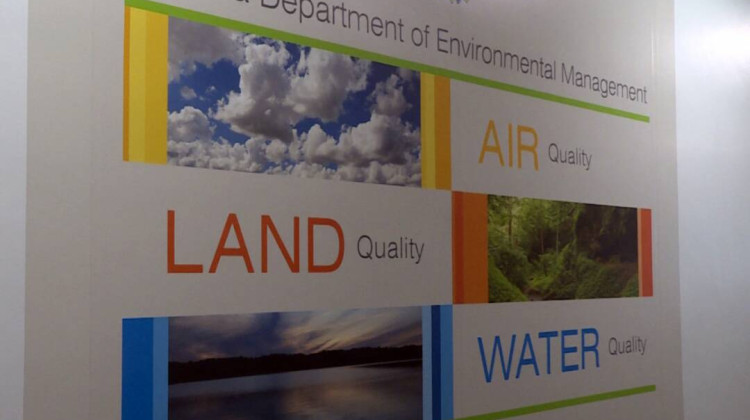
IU Kelley School of Business economists present the 2026 economic outlook in Indianapolis.
Samantha Horton / WFYIIndiana faces slowed growth, but the state is not expected to experience a recession in the coming year. That is according to a recent forecast from the Indiana University Kelley School of Business.
That outlook positions the state better than most others at a time when tariffs and the government shutdown have sparked economic uncertainty.
“The economy is dealing reasonably well with some significant headwinds,” said Kyle Anderson, a business economics professor at IU.
The annual economic outlook — Futurecast 2026 — projects that the U.S. will see just under 2% growth.
“As economists, we like to see that between 2 and 3%,” said Phil Powell, executive director of the Indiana Business Research Center at Kelley.
Here are some of the big takeaways from Futurecast 2026.
Tariffs are disrupting the economy
President Donald Trump has imposed tariffs on some of the U.S.’s largest trading partners since taking office in January. Last year, China purchased about half of the soybeans exported from the U.S.
Indiana ranked 7th in the country in 2023 for soybean exports — totaling more than $2 billion.
China stopped purchasing U.S. soybeans in May in retaliation for Trump administration tariffs.
That could change: Trump and Chinese leader Xi Jinping reportedly struck a deal during negotiations last week for China to resume purchasing soybeans.
The Trump administration also recently announced plans of an additional 10% tariff on Canada in response to a commercial that aired during the first two games of the World Series. Canada is one of Indiana’s top trading partners.
Anderson said that volatility in trade policy has made it difficult for businesses.
“Uncertainty is creating a lot of challenges for business, and what we’re seeing is a lack of general investment,” he said.
A.I. data centers bring temporary growth
Artificial intelligence has been a key driver in growth this year that will continue into 2026, forecasters projected. But it is also causing economic disruption as businesses lean into the technology and cut some jobs.
The construction of data centers will bring temporary jobs, according to Carol Rogers, director of Indiana Business Research Center. But once they are built, data centers don’t employ many people.
“It might be 100-200 — depends on the footprint of the facility,” Rogers said.
She recommends that local governments not offer tax abatements to data centers.
IU financial management professor Russell Rhoads said the surge in investment and growth is expected to eventually come down. He said it is still unclear where the long-term revenue is going to come from with A.I.
Pharmaceutical manufacturing fuels growth
IU’s economic team forecasts growth in life sciences will have a strong influence on the state economy next year. Eli Lilly, Roche, Corteva and Elanco are some of the largest businesses in the sector for the state.
Indiana is making key investments to grow that sector, including the creation of a new innovation district, LEAP, in Lebanon, according to presenters. The district will be home to a new multi-billion dollar facility for Eli Lilly.
“Our exports in pharmaceuticals in 2024 topped out at more than $22 billion and we left North Carolina in the dust,” Rogers said. “So pharma certainly has been a star for us over the past several years.”
Employment and workforce
The national unemployment rate is expected to rise unless the economy begins to add more jobs. Indiana has been doing better than the nation with a lower unemployment rate as of August at 3.6%. The national rate was 4.3%.
Other strains on the workforce included recent changes to immigration policies that have made it more difficult for businesses to obtain necessary visas for workers. For some industries such as engineering sciences, life sciences, physicians, and healthcare highly-skilled, foreign born workers are needed.
“I’m very concerned what these numbers are going to look like from 2025 [to] 2026 given the relatively restrictive immigration policy,” Anderson said.
As the economic uncertainty continues out of Washington D.C., Anderson said there isn’t much that Indiana leaders can do to offset it.
The IU Kelley School of Business plans additional presentations of the Futurecast 2026 in several cities across the state in November.
Contact WFYI All Things Considered newscaster and reporter Samantha Horton at shorton@wfyi.org or on Signal at SamHorton.05.
 DONATE
DONATE






 Support WFYI. We can't do it without you.
Support WFYI. We can't do it without you.